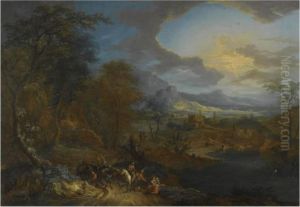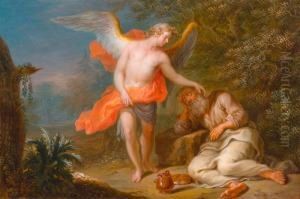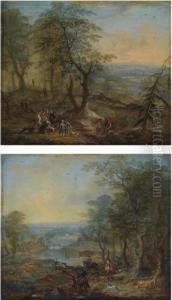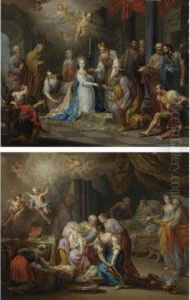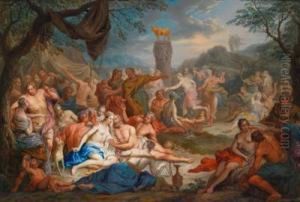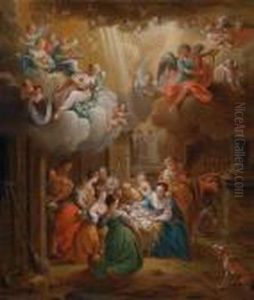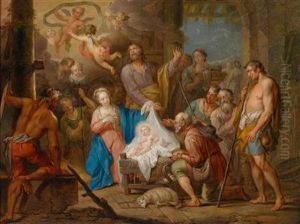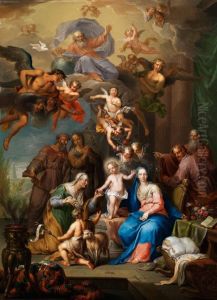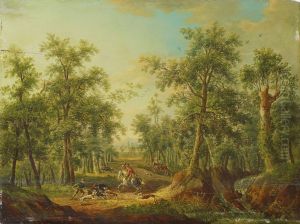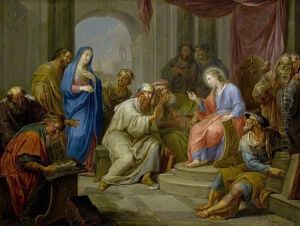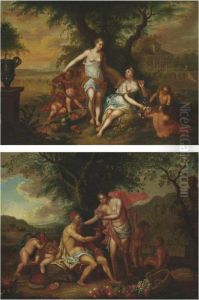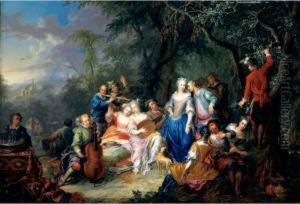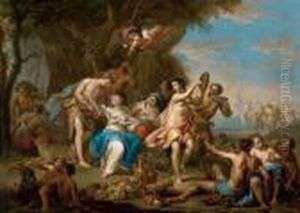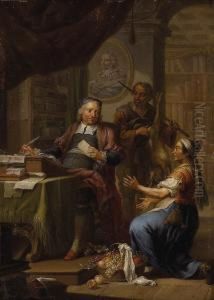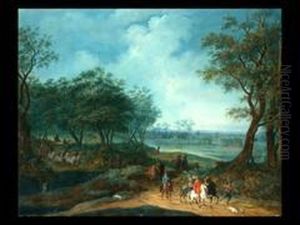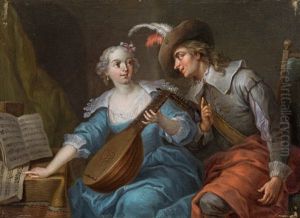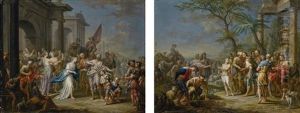Franz Christoph Janneck Paintings
Franz Christoph Janneck was an Austrian painter who specialized in genre scenes and landscapes. Born in Graz, Austria, in 1703, he began his artistic education locally before moving to Vienna, where he furthered his studies and established his career. Janneck was particularly known for his small-scale cabinet paintings, which were highly detailed and often depicted lively tavern scenes, festivals, and mythological subjects.
In Vienna, Janneck became associated with the Imperial Court and was influenced by the works of Flemish and Dutch masters, whose genre scenes were celebrated for their vivid detail and narrative quality. Janneck's work reflected this influence, but he also developed a distinctive style characterized by a keen observation of light effects and a preference for rich, warm colors.
Janneck's contribution to Austrian art in the 18th century was significant, as he was part of the movement that brought the Rococo style to Vienna. This style was known for its ornate and decorative qualities, which were evident in Janneck's intricate compositions and the elegant attire of his figures. Despite the playful and often lighthearted nature of his subjects, he displayed a mastery of technique and an ability to capture the textures and materials of the objects within his paintings.
Throughout his career, Janneck enjoyed the patronage of the Austrian nobility and the clergy, which allowed him to work on a variety of projects, including altarpieces for churches and decorative schemes for palatial residences. Unfortunately, despite his success, Janneck did not leave a large number of followers or students to carry on his legacy, which led to him being somewhat overlooked in the annals of art history compared to other contemporaries.
Franz Christoph Janneck passed away in Vienna in 1761. Today, his works can be found in various art collections across Europe, and they continue to be studied for their contribution to the development of genre painting in the Austrian Baroque period.



